By Paula Glover Rain showers can add an extra layer of complexity to outdoor work, especially for those in the skilled trades. During the spring and fall, when the weather becomes more unpredictable, it’s crucial for workers, managers, and small business owners in construction, grading, electrical, plumbing, HVAC, and related fields to prioritize safety in Read more
ShopTalk
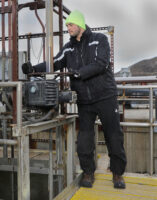
By Paula Glover
Rain showers can add an extra layer of complexity to outdoor work, especially for those in the skilled trades. During the spring and fall, when the weather becomes more unpredictable, it’s crucial for workers, managers, and small business owners in construction, grading, electrical, plumbing, HVAC, and related fields to prioritize safety in wet conditions. From choosing the right raingear to staying weather-aware, here are five essential tips to keep your team safe and productive on rainy workdays.
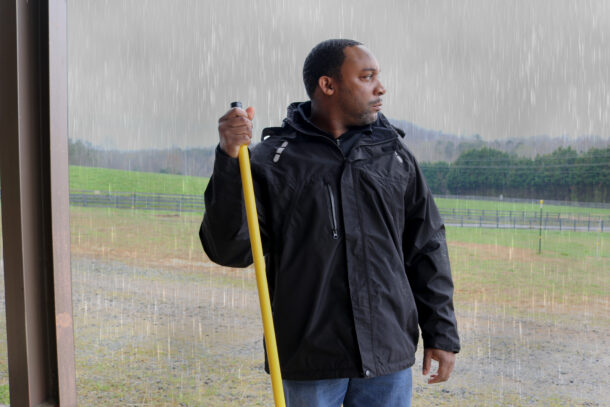
1. Choose Durable Raingear Designed for Work
When it comes to working in the rain, having the right gear can make all the difference. Waterproof workwear goes a long way toward keeping you dry and comfortable on a soggy jobsite.
Look for rain jackets and pants made from durable materials with sealed seams and waterproof layers to prevent water penetration. Ideally, raingear should not only repel rain but also provide breathability to prevent overheating and moisture buildup inside the garment when you’re working up a sweat.
For added safety in dim, rainy conditions, consider investing in high-visibility rainwear to enhance your visibility in low-light conditions and reduce the risk of accidents on the job site.
In spring and fall, when temperatures and conditions vary widely throughout the workday, it’s important to look for rain gear that offers the added flexibility of removable layers and built-in features like roll-out hoods. For example, RefrigiWear offers a 3-in-1 Rainwear Jacket in black or high-visibility yellow that delivers comfortable protection for working outside on rainy days. The lightweight, 100% waterproof outer jacket features a roll-in hood for versatility. Meanwhile, the inner puffer-style jacket provides warmth and insulation and can stand alone.
Whether it’s a light drizzle or a heavy downpour, having the right raingear can make the difference between a productive workday and a complete washout.
2. Protect Your Feet
Don’t skimp on protecting your feet in wet work conditions. Wet surfaces increase the risk of slips, trips, and falls, so it’s essential to invest in comfortable and supportive waterproof work boots or safety shoes.
Look for waterproof work shoes and boots with non-slip soles that provide traction on slippery surfaces. These shoes should also offer adequate support and cushioning to reduce fatigue and prevent foot-related injuries during long hours on the job.
When you’re trying to outwork wet weather, you can’t ignore the risk of trench foot, a painful condition caused by prolonged exposure to wet and cold conditions. Waterproof footwear not only keeps your feet dry but also helps regulate temperature, minimizing the risk of trench foot, cold stress, frostbite or worse weather-related injuries. Prioritizing foot protection means prioritizing stability, comfort, and safety while working in rainy weather.
3. Protect Your Hands
When it comes to handling tools and equipment in rainy weather, a secure grip is everything. Wet conditions can compromise your grip strength and increase the risk of accidents. To mitigate these risks, invest in waterproof gloves designed specifically for working in wet conditions.
Waterproof gloves are made with specialized materials and grip patterns that help you hold equipment and tools securely, even in the rain. Whether you’re handling power tools, operating machinery, or performing tasks that require extreme attention to detail, waterproof work gloves provide the dexterity and protection you need to get the job done.
Waterproof gloves enhance safety and productivity on the job site by keeping your hands dry and enhancing your grip. Proper hand protection is vital to maintaining workplace safety in rainy weather – when you’ve got a grip on the right gear, working in the rain becomes a breeze.
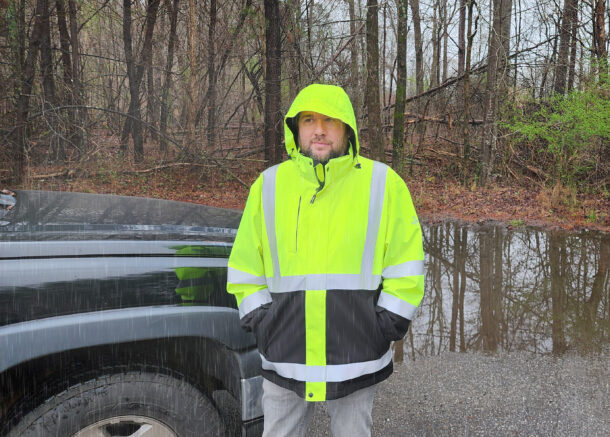
4. Always Stay Weather-Aware
Just because you’ve got the gear to stay dry while working in a downpour doesn’t mean you should. Being weather-aware is key to staying safe when working outdoors, especially during popup thundershowers.
Monitor your local weather forecasts regularly and be prepared to adjust your work schedule accordingly. Rain showers can intensify quickly, bringing the risk of lightning strikes, flash floods, and strong winds. By keeping an eye on weather reports and conditions in your area, you can make informed decisions to protect yourself and your team from severe weather.
In addition to monitoring forecasts, pay attention to environmental cues that indicate changes in weather patterns. Darkening skies, distant thunder, and gusty winds are all signs of impending rain showers. If lightning is detected or flash flood warnings are issued for your area, it’s important to seek shelter immediately and suspend outdoor activities until conditions improve.
By staying vigilant and proactive, you can minimize the risk of weather-related accidents and ensure the safety of everyone on the job site. After all, while OSHA may not have specific standards for workplace safety in the rain, they do require employers to provide an overall safe workplace.
5. Keep Your Raingear & Supplies Handy
For workers who are constantly on the move, remember that packable rain gear is a practical solution for staying dry and comfortable in a variety of wet conditions. These lightweight and compact garments can be easily zipped into a pouch and tucked into a toolbox or backpack so you’re always prepared for sudden changes in weather.
Whether you’re caught in a passing shower or facing prolonged rainfall, packable rain gear provides instant protection without weighing you down. Look for options like the RefrigiWear Midweight Rainwear Set, a packable rain suit designed for convenience and functionality. With features such as an adjustable hood, elastic cuffs and reinforced seams, this rain suit offers reliable protection against the elements while allowing breathability and freedom of movement.
It’s also a good idea to keep a couple of waterproof tarps or plastic sheets stowed with your raingear. When showers spring up, you’ll be able to quickly cover any vulnerable supplies or equipment and minimize any damage to valuable materials.
When Rain Pours Down, It’s Time to Gear Up
Working safely in the rain requires careful preparation, awareness of changing conditions, and the proper protective gear. By investing in quality waterproof workwear, prioritizing foot protection and grip, staying weather-aware, and embracing packable rain gear, workers, managers, and business owners can mitigate risks and ensure a safe and productive work environment.
 About Paula Glover
About Paula Glover
Paula Glover is the Marketing Communications Director for RefrigiWear, the leading manufacturer of insulated workwear, safety apparel and personal protective equipment (PPE) for extreme cold work environments. Learn more at pro.refrigiwear.com.

Heating the Faithful: A Success Story of Comfort and Efficiency St. Paul Catholic Church in Valparaiso, Ind., took a significant step towards heating modernization by installing three state-of-the-art Weil-McLain Stainless Steel Vertical (SVF) 725 boiler units. G.L. Jorgensen Heating & Cooling, the installation contractor, played a pivotal role in the hydronic heating replacement project. St. Paul Catholic Church Read more
Heating the Faithful: A Success Story of Comfort and Efficiency
St. Paul Catholic Church in Valparaiso, Ind., took a significant step towards heating modernization by installing three state-of-the-art Weil-McLain Stainless Steel Vertical (SVF) 725 boiler units. G.L. Jorgensen Heating & Cooling, the installation contractor, played a pivotal role in the hydronic heating replacement project.

St. Paul Catholic Church, spanning roughly 18,000 square feet with seating for 950 parishioners, sought a heating solution that not only accommodated the current space but also had the capacity for future expansions, including the installation of a storage tank hot water heater. The challenge for Father Douglas Mayer of St. Paul was to balance efficiency, comfort and the unique requirements of the church, particularly regarding humidity control for three pipe organs. The primary pipe organ resides in the main church, while two antique wood organs grace a secondary chapel and choir room.
The three existing boilers had reached the end of their service life and required ongoing maintenance, prompting the church to seek a high-efficiency upgrade. Gary Jorgensen Jr. of Valparaiso-based G.L. Jorgensen Heating & Cooling recommended the Weil-McLain SVF boilers, emphasizing their capacity to handle the load, improve occupancy comfort, decrease energy costs and maintain ideal humidity conditions for the delicate wood organs. The Weil-McLain SVF boiler line, ranging from 500 to 3000 MBH models, boasts industry-leading thermal efficiency of up to 98%.
The SVF boiler units were installed in October 2023 and set up as modulating, allowing for seamless load management and turndown capabilities. This feature is designed to adapt to varying occupancy levels, transitioning from periods when the building is unoccupied, and ramping up for church events when the chapel is full. This method is also designed to minimize wear and tear on the system, ensuring long-term performance and reliability.

Installation Challenges and Efficiencies
The installation process faced challenges, particularly due to a narrow staircase leading to the boiler room. However, the compact design of the SVF units facilitated easy transportation and positioning, overcoming accessibility issues.
“The slim design of the SVF boilers helped us more easily maneuver up the four-foot stairway that led to the boiler room where the units were installed,” said Jorgensen.
An auto lift and a battery-powered stairlift were ingeniously employed to navigate the narrow pathway, ensuring a smooth installation.
“The confined access to our second-floor utility room demanded a unit that was both compact and maneuverable, and I must say, I was thoroughly impressed by the installation team at G.L. Jorgensen and the seamless installation of these units in such a constrained environment,” remarked Mayer.
During the installation process, Jorgensen Jr. was particularly struck by the user-friendly interface of the SVF boiler system. Despite it being their first SVF installation, the team found the system remarkably intuitive, as Jorgensen himself attested: “The SVF touchscreen makes setup and installation of the system very simple.”
This sentiment underscores the versatility and efficiency of the SVF line, which boasts features such as a stainless-steel vertical fire tube and shell heat exchanger, alongside intuitive controls and time-saving installation attributes. Furthermore, the incorporation of Unity™ 2 and Nuro® control systems enhance the overall functionality and communication capabilities across Weil-McLain’s high-efficiency boiler line.
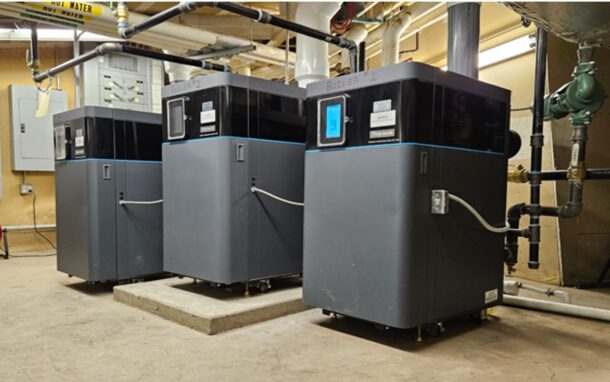
Energy Savings Abound
The project has yielded remarkable benefits thus far. Following a complete heating season, Father Mayer has already begun to observe notable energy savings.
“We’ve seen remarkable utility cost savings since implementing these Weil-McLain units, leading to substantial reductions in our energy expenses,” said Mayer. “It’s been truly gratifying to witness thousands of therms saved compared to previous heating seasons, reaffirming the efficiency and impact of our decision.”
The installation of Weil-McLain SVF 725 boilers at St. Paul Catholic Church not only addressed the immediate heating needs of the church but also positions them for future hot water requirements. St. Paul is experiencing improved energy efficiency, reduced operational costs and enhanced comfort for its community members.
“These units have proven their dependability, ensuring that the church remains comfortable for me and all its occupants, especially during our Sunday services,” added Mayer. “We are quite pleased with the results from these high efficiency units.”
For more information on the Weil-McLain SVF boiler line and its applications, please contact Weil-McLain or visit www.weil-mclain.com.
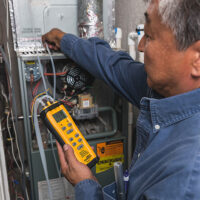
Now that we’re in the middle of heating season, we bet you’re making more and more service calls for malfunctioning or under-performing furnaces. During these calls, it’s important to make sure that the furnace pressure switch is functioning as intended. The furnace pressure switch opens and closes to prevent harmful combustion gases from entering the Read more
Now that we’re in the middle of heating season, we bet you’re making more and more service calls for malfunctioning or under-performing furnaces. During these calls, it’s important to make sure that the furnace pressure switch is functioning as intended.
The furnace pressure switch opens and closes to prevent harmful combustion gases from entering the living space and to prevent furnace fires and potential explosions. An elastomeric diaphragm within the switch remains open when the furnace is off. When the furnace is turned on and functioning correctly, the diaphragm senses the pressure created by the draft inducer motor. This completes an electrical circuit that allows the furnace to ignite for the heating cycle. If it senses negative pressure the switch shuts down because the furnace is not operating properly and could create an unsafe environment for residents and technicians.

When examining a pressure switch, start by using a CO detector to check for harmful gases to ensure you can work safely. Then, run the furnace through its cycle. If you hear a flapping sound when the furnace is on, that may indicate that the diaphragm or the pressure switch is old and could need replacing. Also, check to make sure that the furnace is properly vented.
If the furnace tries to cycle but stops during start-up and then shuts down, it may be because of a faulty pressure switch. In this case, check for a clogged hose port, corrosion or debris blocking the switch. A bad spring could also be the culprit. All of these should be examined.
To test a pressure switch, an ideal tool is the Fieldpiece SDMN6 Manometer Dual Port w/ Pressure Switch Tester. This versatile manometer allows a tech to use the ports to quickly connect to the switch while it’s still in place, verify that it’s operating correctly and even calibrate it to the manufacturer’s specifications.
When a pressure switch is at fault and requires a replacement, a good piece of advice is to keep a supply of universal pressure switches in the truck. This quickly helps get a furnace back to operating properly and eliminates delays during a call. When replacing a faulty switch with a universal switch, notify the property owner. They may request that an OEM part be used instead.
The pressure switch is an important piece of every heating system and knowing how to examine, test, calibrate and replace them is a critical job for techs and the Fieldpiece SDMN6 is the best tool for the job. See it and more tools like it at Fieldpiece.com.
Content provided by Fieldpiece Instruments

When the weather gets rough, tough workers reach for RefrigiWear When your “office” is the great outdoors, you’re at the mercy of whatever weather blows your way. Cold, windy and wet conditions make tough jobs even tougher. Now, workers who go toe-to-toe with Old Man Winter can stay safe, warm and productive in any weather Read more
When the weather gets rough, tough workers reach for RefrigiWear
When your “office” is the great outdoors, you’re at the mercy of whatever weather blows your way. Cold, windy and wet conditions make tough jobs even tougher. Now, workers who go toe-to-toe with Old Man Winter can stay safe, warm and productive in any weather with the durable protection of insulated workwear from RefrigiWear.
If you’ve never heard of RefrigiWear, you’re not alone. But step into any refrigerated warehouse or cold storage freezer, and RefrigiWear jackets, bib overalls and coveralls are practically all you’ll see.
“RefrigiWear invented the original freezer suit back in 1954 for people working in the then-emerging frozen food business,” explains Mitch Harden, Vice President of Outdoor Sales. “We quickly earned a reputation for making the warmest, most durable and comfortable clothing for people working in the cold, inside or out — from 50° Fahrenheit above zero to 60°F below zero and everywhere in between.”
Focused on safety and productivity: RefrigiWear understands the unique challenges of working in the cold. As the temperature goes down, the risk of cold stress and cold-related injuries goes up, endangering worker safety and threatening productivity. RefrigiWear-insulated clothing increases warmth and safety for workers so they can focus on getting the job done right.
“Frostbite and hypothermia set in faster, and in milder temperatures, than you expect,” explains Harden. “Mind-numbing cold and wind increase the risk of costly on-the-job accidents. Not having the right cold weather protection can mean you’re literally risking your own life and limb, as well as that of others on the job site.”
After 70 years in business, RefrigiWear is still driven by its commitment to developing products that keep working people warm, whether they’re in a freezer, on a farm, on a highway, or on a high-rise construction site.
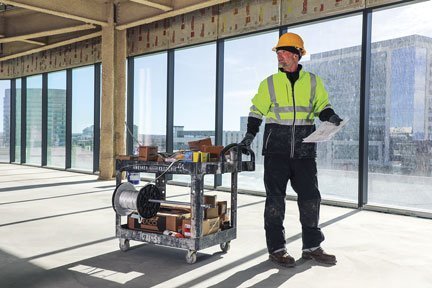
Here are three examples of our product offering designed for a range of difficult weather conditions:
Insulated Softshell Jacket
For example, the -20°F Insulated Softshell Jacket is a perennial favorite among people whose work requires long hours in subzero temperatures. Available in black, navy, and black with enhanced-visibility reflective tape, or in ANSI-rated high-visibility yellow or orange, this jacket was purpose-built for fighting frostbite and hypothermia without holding workers back or weighing them down.
Plus, this jacket is loaded with creature comforts, including:
- a flexible outershell that moves with you while you work;
- industrial-strength insulation to capture your own body heat for maximum warmth;
- zippered pockets for holding your phone or small tools;
- wind-sealing cuffs; and
- a water-repellent, wind-tight finish that brushes off winter’s worst weather without breaking a sweat.
ComfortGuard™ Jackets, Bib Overalls and Coveralls
ComfortGuard™ Jackets, Bib Overalls and Coveralls are also popular with winter workers. Fully wind-tight, water-repellent and comfort-rated for -10°F, ComfortGuard gear from RefrigiWear delivers the comfortable and familiar fit-and-feel of denim with the added utility of tool loops, extra pockets and grime-resistant durability.
“Spring brings everything from drizzles to downpours and, at this time of year, most RefrigiWear customers who work outdoors are beginning to look for lightweight waterproof workwear,” adds Harden.
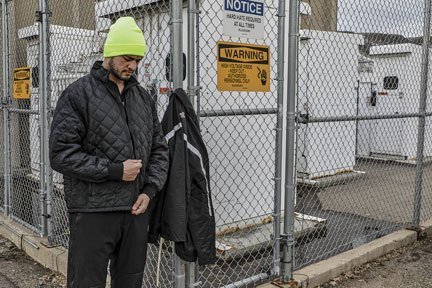
3-in-1 Rainwear Jacket
RefrigiWear can meet workers’ needs in those milder conditions, too. The 3-in-1 Rainwear Jacket, also available in ANSI-rated high-visibility lime, is comfort-rated for 10°F and keeps workers prepared to handle unpredictable weather on the job. When the rain rolls in, roll out the hood on the outer jacket, and add the inner coat when the temps drop.
“We’re here to protect the people who brave the worst conditions to keep our country running at its best,” says Harden.
Protect your workforce from cold, wet and windy weather so they can focus on getting the job done safely. Contact RefrigiWear today at outdoor@refrigiwear.com for all-weather workwear recommendations personalized for your working conditions.

Reznor, the industry-leading unit heater manufacturer, will launch several product innovations at their booth (#S9365) during the American Heating Refrigeration (AHR) Expo in Chicago January 22 through January 24, 2024. Reznor’s newest universal, gas-fired unit heaters (models UDXC/UBXC) bring safety, comfort and efficiency to standard indoor industrial/commercial buildings like warehouses and retail outlets, as well Read more
Reznor, the industry-leading unit heater manufacturer, will launch several product innovations at their booth (#S9365) during the American Heating Refrigeration (AHR) Expo in Chicago January 22 through January 24, 2024.
Reznor’s newest universal, gas-fired unit heaters (models UDXC/UBXC) bring safety, comfort and efficiency to standard indoor industrial/commercial buildings like warehouses and retail outlets, as well as residential spaces like garages and workshops. For enhanced performance in dusty, dirty environments, these heaters can be field converted to use fresh air for combustion. Power vented, these units are available in 14 sizes starting at 30,000 BTU/hour up to 400,000 BTU/hour gas input. UDXC/UBXC unit heaters are ETL- approved for installation in the United States and Canada and provide a minimum efficiency of 82% to 83%.
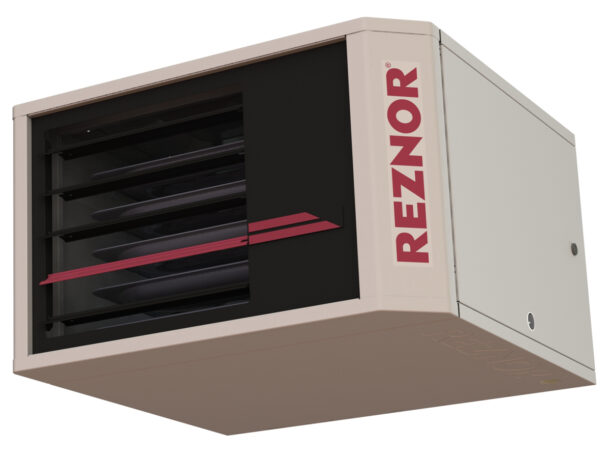
Modern features that complement any aesthetic include two-tone, scratch-resistant paint; clean, rounded corners and edges; hidden screws and fasteners. UDXC models use an axial propeller fan for low static applications, while UBXC models use a blower for higher CFM, static applications. Service and
maintenance are minimal due to the heater’s robust construction, industry-best warranty and convenient features (LED status light, hinged access door and error code display).
For 135 years, Reznor has provided reliable, innovative unit heaters, duct furnaces, air handlers and specialty heaters. As part of Madison Air, Reznor partners with infrared heating manufacturer Roberts-Gordon and HVLS fans manufacturer Big Ass Fans to provide energy efficient, year-round comfort for complex industrial environments.

 About Paula Glover
About Paula Glover